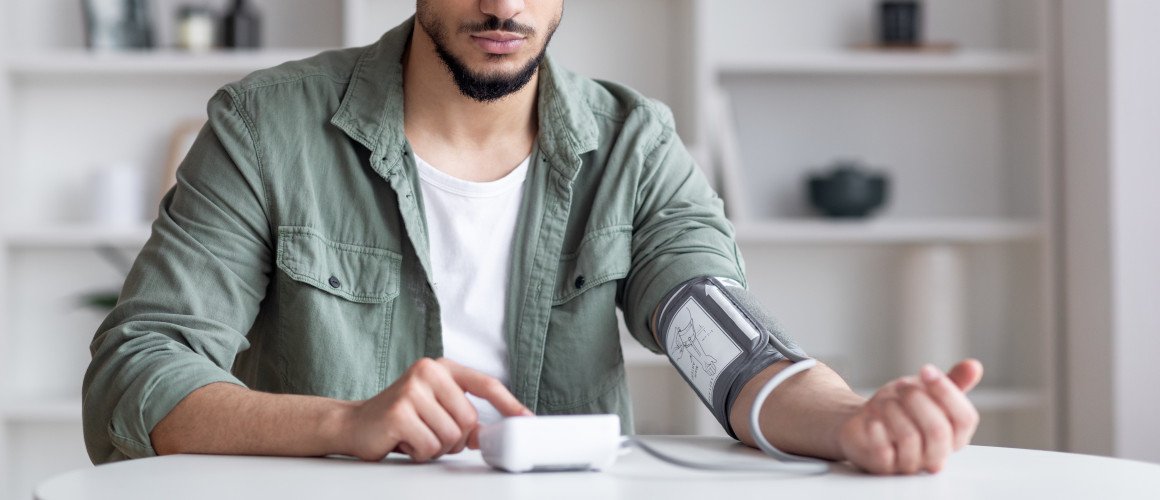- Products
- New Products
- Featured Products
- Color and Print Themes
- Blood Pressure Measurement
- NIBP / Vital Sign Monitors
- Digital Aneroid Sphygmomanometers
- Palm Aneroid Sphygmomanometers
- Pocket Aneroid Sphygmomanometers
- Pro's Combo Sphygmomanometers
- Multicuff Sphygmomanometers
- Clock Aneroid Sphygmomanometers
- Mercury Sphygmomanometers
- Home Blood Pressure Measurement
- Adcuff +
- Gauges
- Bulb & Valves
- Disposable Cuffs
- Reusable Cuffs & Bladders
- Sphygmomanometer Accessories
- Sphygmomanometer Parts
- Caseware
- CPR / Airway
- EENT
- Instruments & Accessories
- Laryngoscopes
- Penlights
- Pulse Oximeters
- Stethoscopes
- Thermometry
- Vital Signs Monitors
- Solutions
- About ADC
- Learning Center
- Support
- Blog
- Contact
Blood Pressure Education Month Calls Attention to Hypertension

Written By:
The ADC Medical Education Team
Posted On:
May 03, 2022
May is High Blood Pressure Education month. Created by the World Hypertension League in 2005, the yearly observation calls attention to the problem of uncontrolled high blood pressure.
According to the CDC, “Nearly one-third of all American adults have high blood pressure and more than half of them don’t have it under control.” The CDC also claims that “most people with uncontrolled high blood pressure know they have high blood pressure, see their doctor, and take prescribed medicine,” but that what is needed now is for doctors, nurses, and their patients to pay regular and frequent attention to controlling blood pressure.
A critical part of this is patient at-home measuring.
Why Measure Your Blood Pressure at Home?
It’s a valid question, since in-office readings by a medical professional can be more reliable than at-home readings. But there are good reasons for regular at-home monitoring.
White-Coat Hypertension
Most people are accustomed to having their blood pressure measured whenever they visit a doctor, regardless of the reason for the appointment. Patients are often told that readings are high, even though they have not been diagnosed as hypertensive. Even when done under ideal circumstances and by a professional, in-office readings of hypertensive and non-hypertensive patients alike can reflect what is known as “white-coat” hypertension: elevated readings that result from trying to get comfortable in a clinical setting and nervousness about the outcome of your reading.
The white-coat effect, according to Dr. Luke Laflin at the Cleveland Clinic, is not lasting, but it cannot be discounted, either. Studies have indicated that although it is possible that white-coat readings can be anomalies, there is evidence they can be “associated with higher risks of cardiovascular disease and total mortality.” (Read more about these studies on the ADC blog. Blood Pressure in the News.)
Masked Hypertension
This variability makes at-home testing even more critical. In fact, regular at-home readings taken under consistent conditions can prove to be more accurate than in-office readings, in that they may reveal something called “masked” hypertension: hypertension that may not show up in a single, in-office reading.
“It's hard to know just how common it is, since doctors don't routinely tell people to measure their blood pressure at home if it's normal in the doctor's office or clinic,” Harvard Health Publishing. “The only reason we know it exists is from clinical studies that required people to undergo ambulatory blood pressure monitoring.”
Ensuring Reliable Results
For the most reliable at-home readings, take your blood pressure at a time and in surroundings as similar as possible each day and keep a record of your readings. If they are consistently high, share them with your doctor.
Further Reading
CDC: Getting Blood Pressure Under Control
Harvard Health: What is masked hypertension?
Cleveland Clinic: Do You Really Need To Check Your Blood Pressure at Home? (Video)
